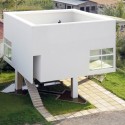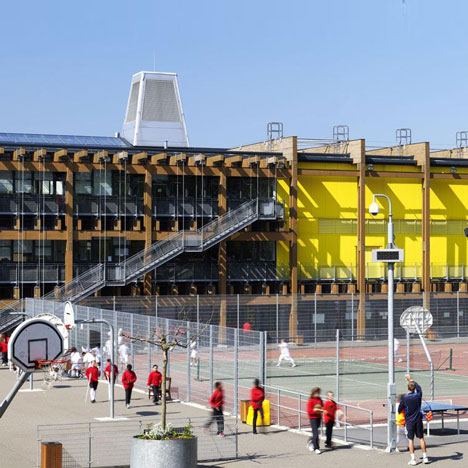این یک پست طراحی نیست ولی طراحی نیاز به این پست داره!
این موضوع که طراحی مناسب محیط مصنوع در ارتقای جنبه های مختلف زندگی بهره برداران از محیط تاثیر دارد برای کسانی که به امر طراحی مشغولند واضحه اما شاید کمتر کسی اطلاعی از میزان دقیق این تاثیر داشته باشه. در پژوهشی مشترک دانشگاه سالفورد و انجمن معماران نایتینگال انگلستان ثابت شده که طراحی مناسب فضای آموزشی می تواند تا 25 درصد عملکرد درسی دانشآموزان مقطع ابتدایی را ارتقا بده؛ 25 درصد!. نتایج این پژوهش بر اساس بررسی یک ساله بر روی 7 مدرسه در انگلستان به دست آمده. این تحقیق بر اساس ارزیابی معیارهایی همچون نور طبیعی، دمای محیط، میزان نوفه (نویز)، کیفیت هوا و جهت کلاسها انجام پذیرفته.
به نظرم دانش طراحی محیط برای کمک به طراحان، بسیار زیاد به این تحقیقات علمی نیازمنده. این نوع تحقیقات بین رشتهای به دلیل وابستگی بسیار زیاد به شرایط اجتماعی-فرهنگی مناطق مختلف باید به صورت بومی مورد توجه پژوهشگران قرار بگیره ولی خب متاسفاته جایی برای پژوهشهای بین رشتهای در دانشگاهها وجود نداره.
well-designed classrooms can improve the academic performance of primary school pupils by 25 percent according to a new study undertaken by the University of Salford and UK architects Nightingale Associates.
The year-long study assessed seven schools in Blackpool, where researchers surveyed pupils about age, gender and performance in maths, reading and writing. They also evaluated classroom environments by measuring factors such as natural light, noise levels, temperature, air quality and classroom orientation, before comparing the two sets of data.
"It has long been known that various aspects of the built environment impact on people in buildings, but this is the first time a holistic assessment has been made that successfully links the overall impact directly to learning rates in schools," said Peter Barrett, a professor at the University of Salford. "The impact identified is in fact greater than we imagined."
Caroline Paradise of Nightingale Associates' research arm THiNK added: "This will support designers and educators in targeting investment in school buildings to where it will have the most impact, whether new build or refurbishment."
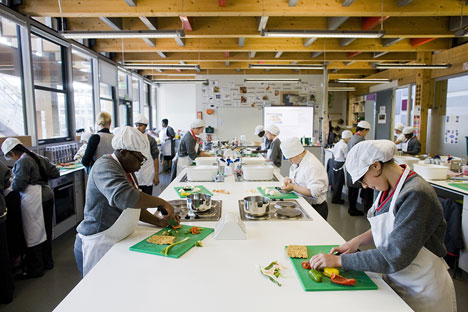
Above: Mossbourne Community Academy by Rogers Stirk Harbour + Partners, photographed by Mark Burton
Architects are using the study to argue against the recent restrictions enforced by the UK government on the design of new school buildings, including a ban on curved or glass walls and the addition of standard room sizes. Architect Richard Rogers commented: "This study confirms what our practice, Rogers Stirk Harbour + Partners, has long believed: good design has the potential to have a truly positive effect on the way children learn."
Describing his firm's design for Mossbourne Community Academy in Hackney (pictured), he added: "Mossbourne is a striking piece of evidence; high in the league tables and with staff and pupils commenting enthusiastically about the impact of the school’s careful design. We proved that it is possible to produce a well-designed school collaboratively with the senior teaching staff which adheres to a tight budget. I hope that the government takes note of this report for the sake of the next generation."
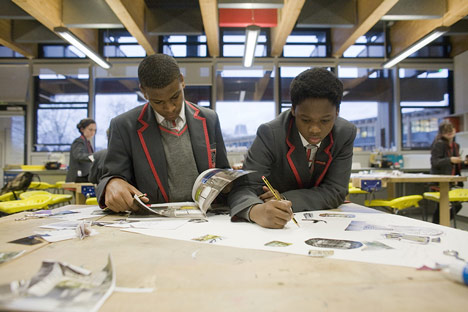
Above: Mossbourne Community Academy by Rogers Stirk Harbour + Partners, photographed by Mark Burton
However, Education secretary Michael Gove has dismissed the significance of the study and is pushing ahead with plans to build 261 primary and secondary schools using the new 'baseline' templates. A spokeswoman from the department for education said: "There is no convincing evidence that spending enormous sums of money on school buildings leads to increased attainment. An excellent curriculum, great leadership and inspirational teaching are the keys to driving up standards."
She continued: "The standard school designs for the Priority Schools Building Programme will provide light, bright and airy learning environments for pupils and were drawn up jointly with architects and teaching experts to make the very best use of space."
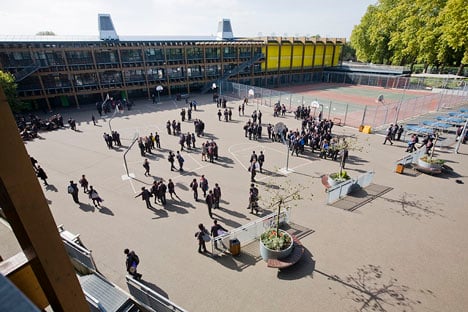
Above: Mossbourne Community Academy by Rogers Stirk Harbour + Partners, photographed by Mark Burton
Gove, who spearheaded the plans for standardised templates, previously claimed that architects were "creaming off cash" for school design. In a conference last year he said: "We won't be getting Richard Rogers to design your school, we won't be getting any award-winning architects to design it, because no one in this room is here to make architects richer."
The new government guidelines came into force on 31 October and the Royal Institute of British Architects voiced concerns that the proposed 'flat pack' approach will "deprive students and teachers of quality environments that are proven to support teaching and learning". Meanwhile, London studio Aberrant Architecture claimed that the UK should look to Brazil as an example for quality school building programmes and Nicholas Hare Architects' partner Paul Baxter told Dezeen: "It is important that the lessons about school design that architects have learned over the last few years should not be wasted," following his firm's completion of a secondary school with walls of yellow brick, bronzed aluminium and unfinished timber.
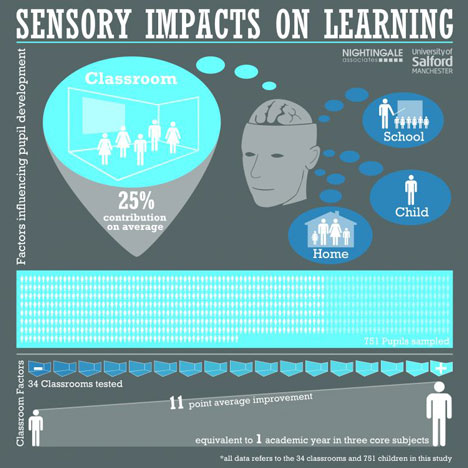
The full results of the survey have been published here and the researchers plan to continue their studies for a further 18 months, covering 20 more schools in different parts of the UK.
Gove's department also plans to remove design and other creative subjects from the school curriculum, a move branded “short-sighted insanity” by incoming D&AD president Neville Brody and the subject of a campaign by over 150 UK designers, brands and organisations including Apple's Jonathan Ive and fashion designer Stella McCartney.
Find out more about the new standardised school templates in our earlier story, see all our stories about UK school design.












